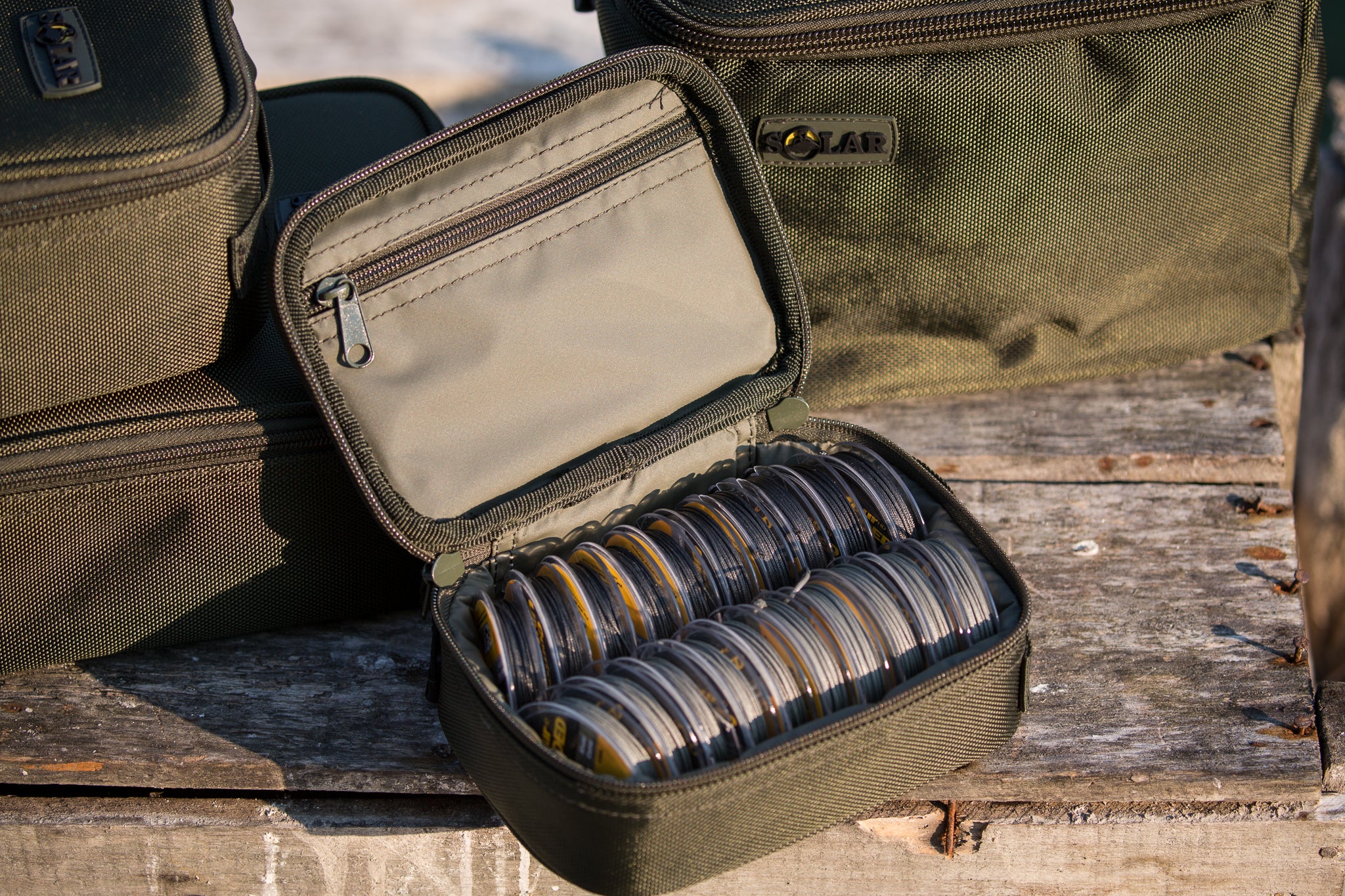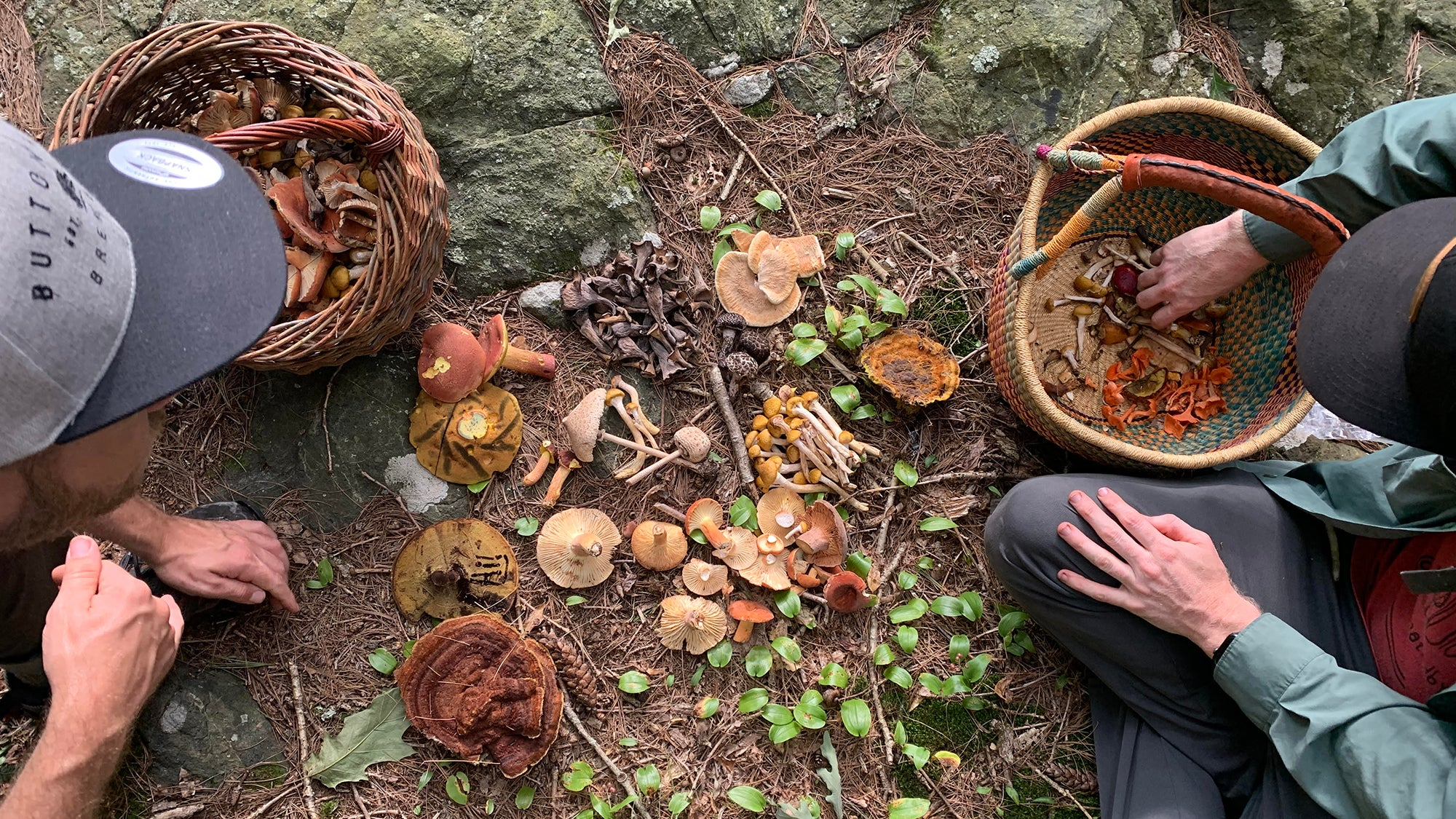Mushroom cultivation has been gaining immense popularity in recent years. This is because mushrooms have numerous health benefits and are also delicious. Temperature and humidity play a crucial role in the growth and development of mushrooms. These two factors need to be managed effectively to ensure a successful harvest. In this article, we will discuss the importance of temperature and humidity in mushroom cultivation and common mistakes made in their management.
How to maintain the temperature and humidity in your mushroom bags?
Temperature and humidity are two critical factors that need to be taken into account during mushroom cultivation. The ideal temperature for mushroom growth ranges from 20°C to 24°C, while the humidity should be kept between 80-90%. These conditions can be achieved by providing proper ventilation, water supply, and heat management. The optimum temperature and humidity levels will promote the growth and development of the mushroom mycelium, leading to a higher yield of mushrooms.
The temperature and humidity levels also affect the quality of mushrooms. High humidity levels prevent the loss of water from the mushroom, which can cause them to become soft and soggy. Low humidity levels can cause the mushrooms to dry out and shrink, which will reduce their quality. Maintaining the ideal temperature and humidity levels can lead to better yields and higher-quality mushrooms.
Common mistakes in temperature and humidity management
Mistakes in temperature and humidity management are common during mushroom cultivation. Some of the most common mistakes include:
- Failure to monitor temperature and humidity levels regularly
- Inaccurate readings due to faulty equipment
- Over-reliance on automation
- Inadequate ventilation
- Poor insulation
It is essential to monitor temperature and humidity levels regularly using reliable equipment to avoid these common mistakes. Manual monitoring is also necessary to detect any irregularities in the automated systems. Proper ventilation and insulation are crucial for maintaining the ideal temperature and humidity levels.
Overview of the article
In this article, we have discussed the importance of temperature and humidity in mushroom cultivation. We have seen how these factors play a vital role in the growth and development of mushrooms and how they affect the quality of the final product. We have also highlighted some common mistakes made in temperature and humidity management and the importance of regular monitoring and proper ventilation. By managing these factors effectively, mushroom growers can achieve better yields and higher-quality mushrooms.
Temperature and humidity are two critical factors that need to be managed effectively during mushroom cultivation. The ideal temperature and humidity levels promote the growth and development of mushrooms and ensure better yields and higher-quality mushrooms. Common mistakes in temperature and humidity management can be avoided through regular monitoring, reliable equipment, proper ventilation, and insulation. With these tips, mushroom growers can achieve greater success in their cultivation efforts.
Understanding temperature and humidity
Mushrooms are an excellent source of food and nutrition. They are also known for their medicinal properties and have been used for centuries to treat various ailments. However, the growth and development of mushrooms are heavily dependent on temperature and humidity. In this article, we will discuss the importance of understanding temperature and humidity, the ideal ranges for different types of mushrooms, how they affect mushroom growth, and the tools used to measure them.
Temperature and humidity are two critical factors that affect the growth and development of mushrooms. Temperature refers to the degree of heat or coldness, while humidity refers to the amount of moisture in the air. Both these factors are interrelated and have a direct impact on the growth and quality of mushrooms.
Ideal temperature and humidity ranges for different types of mushrooms
Different types of mushrooms require different temperature and humidity levels to grow optimally. Here are some of the ideal temperature and humidity ranges for popular mushroom varieties:
-
White button mushroom: Temperature range of 18-23°C and humidity range of 85-95%
-
Shiitake mushroom: Temperature range of 12-24°C and humidity range of 80-85%
-
Oyster mushroom: Temperature range of 20-28°C and humidity range of 80-90%
-
Reishi mushroom: Temperature range of 20-26°C and humidity range of 80-85%
-
Morel mushroom: Temperature range of 15-18°C and humidity range of 85-90%
It is essential to maintain the ideal temperature and humidity ranges to promote the growth and development of mushrooms.
How temperature and humidity affect mushroom growth?
Temperature and humidity have a direct impact on the growth and development of mushrooms. The ideal temperature and humidity ranges create an environment that is conducive to mushroom growth. When the temperature and humidity levels are too high or too low, it can affect the mycelium's growth, which can lead to a reduced yield or poor quality mushrooms.
High humidity levels can also promote the growth of mold, which can be harmful to the mushrooms. Low humidity levels can cause the mushrooms to dry out and become dehydrated. High temperatures can cause the mycelium to grow too quickly, which can lead to weak mushroom stems and caps.
Tools for measuring temperature and humidity
Measuring temperature and humidity is crucial for maintaining the ideal conditions for mushroom growth. Here are some of the tools used for measuring temperature and humidity:
-
Thermometer: A thermometer is used to measure temperature. There are different types of thermometers, including digital, mercury, and alcohol-based thermometers.
-
Hygrometer: A hygrometer is used to measure humidity. There are different types of hygrometers, including mechanical, electronic, and digital hygrometers.
-
Data loggers: Data loggers are devices that can record temperature and humidity readings over a specific period. These devices are useful for monitoring temperature and humidity levels over time.
Temperature and humidity play a crucial role in the growth and development of mushrooms. The ideal temperature and humidity ranges for different types of mushrooms must be maintained to ensure optimal growth and quality. Measuring temperature and humidity is essential for monitoring and maintaining the ideal conditions. With this knowledge and the right tools, growers can ensure a successful harvest of high-quality mushrooms.
Factors affecting temperature and humidity
In the previous section, we discussed the ideal temperature and humidity ranges for different types of mushrooms and how they affect mushroom growth. In this section, we will delve into the various factors that affect temperature and humidity levels in mushroom cultivation.
-
Location and climate: The location and climate of the cultivation area are essential factors that affect temperature and humidity. The temperature and humidity of the environment where the mushrooms are cultivated will determine the amount of moisture required in the air and substrate. The location of the cultivation area also plays a role in determining the ventilation and airflow required in the cultivation room.
-
Airflow and ventilation: Proper ventilation and airflow are critical for maintaining the right temperature and humidity levels in a mushroom cultivation room. Without proper ventilation, humidity levels can build up, leading to the growth of molds and bacteria, which can cause contamination and stunted mushroom growth. On the other hand, insufficient airflow can lead to temperature spikes and fluctuations, which can be detrimental to mushroom growth.
-
Substrate moisture content: The moisture content of the substrate, or the material in which the mushrooms are grown, is another essential factor that affects temperature and humidity levels. The substrate should have the correct moisture content to maintain the ideal temperature and humidity levels required for optimal mushroom growth. If the substrate is too dry, it can lead to low humidity levels, while if it is too wet, it can lead to high humidity levels.
-
The type and size of the mushroom bags: The type and size of the mushroom bags used for cultivation can also affect temperature and humidity levels. Some types of mushroom bags have better airflow and ventilation, while others may retain more moisture, affecting humidity levels. Similarly, the size of the bags used can also affect temperature and humidity levels, as larger bags may require more moisture to maintain optimal conditions.
-
Tools for measuring temperature and humidity: Finally, it is essential to have the right tools to measure temperature and humidity levels accurately. A thermometer and a hygrometer are two essential tools that every mushroom cultivator should have. These tools will help monitor temperature and humidity levels and allow for adjustments to be made as necessary to maintain optimal conditions.
In conclusion, several factors affect temperature and humidity levels in mushroom cultivation. Understanding these factors is crucial for maintaining optimal conditions for mushroom growth and ensuring a successful harvest. Proper ventilation, substrate moisture content, mushroom bag type and size, and accurate measurement tools are all critical factors to consider when growing mushrooms.
Preparing your environment for mushroom cultivation
Now that we have discussed the various factors that affect temperature and humidity in mushroom cultivation, it is time to prepare the environment for optimal mushroom growth. In this section, we will cover the steps required to set up a suitable environment for mushroom cultivation.
Choosing the right location: The first step in preparing your environment for mushroom cultivation is to choose the right location. The location should be an enclosed space, such as a greenhouse or a room with few windows, to maintain consistent temperature and humidity levels. The location should also be free from pests and other contaminants that can affect mushroom growth.
-
Setting up proper ventilation: Proper ventilation is critical for maintaining optimal temperature and humidity levels in a mushroom cultivation environment. You can install fans and air ducts to circulate the air and remove excess moisture from the room. Make sure to keep the ventilation system clean to prevent contamination.
-
Installing a heating and cooling system: Depending on your location and climate, you may need to install a heating and cooling system to maintain the ideal temperature range for your mushroom species. A heating system can maintain the temperature during colder months, while a cooling system can prevent the temperature from rising too high during hotter months.
-
Creating a humidification system: A humidification system is also necessary for maintaining the right humidity levels in your mushroom cultivation environment. You can create a simple humidification system by placing a humidifier or a misting system in the room. Alternatively, you can create a DIY humidification system using a container of water and a cloth or sponge.
In conclusion, preparing the environment for mushroom cultivation requires careful consideration of several factors, including location, ventilation, heating and cooling systems, and humidification systems. By taking the necessary steps to set up an optimal environment, you can ensure the best possible conditions for mushroom growth and achieve a successful harvest.
Monitoring temperature and humidity
Regular monitoring of temperature and humidity levels is essential for successful mushroom cultivation. In this section, we will discuss the importance of monitoring and the tools required for effective monitoring.
-
Importance of regular monitoring: Temperature and humidity levels can fluctuate depending on various factors such as weather, ventilation, and substrate moisture content. Regular monitoring helps to ensure that the environment is maintained within the optimal range for your mushroom species. Monitoring can also help you detect and correct any issues before they impact the growth of your mushrooms.
-
Frequency of monitoring: The frequency of monitoring depends on various factors such as the size of the cultivation area, the type of mushroom species, and the time of year. In general, it is recommended to monitor temperature and humidity levels at least twice a day. During the fruiting stage, you may need to monitor more frequently, such as every four hours.
-
Tools for monitoring temperature and humidity: Several tools are available for monitoring temperature and humidity levels. A thermometer can be used to measure the temperature, while a hygrometer can be used to measure humidity levels. You can also use digital temperature and humidity monitors that provide real-time readings and alerts for any fluctuations outside of the optimal range.
In addition to the above tools, some growers also use data loggers that record temperature and humidity levels over time. Data loggers can help you track the changes in temperature and humidity levels and identify any patterns or issues that need attention.
In conclusion, regular monitoring of temperature and humidity levels is critical for successful mushroom cultivation. By monitoring frequently and using the right tools, you can ensure that the environment is maintained within the optimal range for your mushroom species, leading to a successful harvest.
Adjusting temperature and humidity
Maintaining the optimal temperature and humidity levels is essential for healthy mushroom growth. In this section, we will discuss techniques for increasing and decreasing temperature and humidity levels and how to adjust them without damaging the mushrooms.
Techniques for increasing temperature and humidity:
-
Add a heating system: A heating system can be used to increase the temperature in the cultivation area. There are various types of heating systems available, including space heaters and radiant heaters.
-
Increase substrate moisture: Increasing substrate moisture can increase humidity levels in the cultivation area. This can be achieved by misting the substrate or adding water to the growing medium.
-
Use a humidifier: A humidifier can be used to increase humidity levels in the cultivation area. There are various types of humidifiers available, including ultrasonic and evaporative humidifiers.
Techniques for decreasing temperature and humidity:
-
Add ventilation: Proper ventilation can decrease temperature and humidity levels in the cultivation area. Ventilation can be achieved by opening windows, using fans, or installing an exhaust system.
-
Reduce substrate moisture: Reducing substrate moisture can decrease humidity levels in the cultivation area. This can be achieved by increasing the airflow or using a dehumidifier.
-
Use an air conditioning system: An air conditioning system can be used to decrease the temperature in the cultivation area. There are various types of air conditioning systems available, including portable air conditioners and split systems.
How to adjust the humidity and temperature without damaging the mushrooms:
When adjusting temperature and humidity levels, it is important to do so gradually to avoid damaging the mushrooms. Sudden changes in temperature and humidity can shock the mushrooms and impact their growth. It is recommended to make small adjustments over time and monitor the environment closely.
In conclusion, adjusting temperature and humidity levels is an important aspect of mushroom cultivation. By using the right techniques and adjusting levels gradually, you can maintain an optimal environment for healthy mushroom growth.
Common mistakes in temperature and humidity management
Proper temperature and humidity management are crucial for successful mushroom cultivation. However, even experienced growers can make mistakes that can negatively impact the growth and yield of their crops. Here are some common mistakes in temperature and humidity management that you should avoid:
-
Overheating or underheating the cultivation area
Maintaining the correct temperature is critical for the growth of mushrooms. However, overheating or underheating the cultivation area can have disastrous consequences. If the temperature is too high, the mycelium will grow too fast, and the mushrooms will become stunted, dry, and discolored. On the other hand, if the temperature is too low, the growth of the mycelium and mushrooms will slow down, and the yield will be significantly reduced.
To avoid overheating or underheating, it's important to invest in a reliable heating and cooling system. You should also make sure that the cultivation area is properly insulated to prevent temperature fluctuations.
-
Overhumidifying or underhumidifying the substrate
Mushrooms require a specific level of humidity to grow properly. However, overhumidifying or underhumidifying the substrate can be detrimental to their growth. If the substrate is too dry, the mushrooms will not be able to absorb enough water, and they will become stunted and dry. Conversely, if the substrate is too wet, the mushrooms will become slimy and prone to mold and bacterial infections.
To prevent overhumidifying or underhumidifying the substrate, you should regularly monitor the humidity levels using a hygrometer. You can also invest in a humidification system that can automatically adjust the humidity levels as needed.
-
Ignoring the impact of the substrate
The substrate plays a critical role in the growth and development of mushrooms. The quality of the substrate, its moisture content, and the presence of contaminants can all affect the growth and yield of your crops. Ignoring these factors can result in poor quality mushrooms or even crop failure.
To avoid this mistake, you should pay close attention to the quality of the substrate you use. You should also sterilize or pasteurize the substrate to eliminate any contaminants that can harm your crops. Additionally, you should make sure that the substrate has the correct moisture content for optimal mushroom growth.
-
Inadequate ventilation
Proper ventilation is essential for maintaining the correct temperature and humidity levels in your cultivation area. Without adequate ventilation, the air can become stagnant, and the humidity levels can become too high, leading to mold and bacterial infections. Poor ventilation can also result in an accumulation of carbon dioxide, which can stunt mushroom growth and reduce yields.
To prevent this mistake, you should make sure that your cultivation area has proper ventilation. This can be achieved through the use of fans and vents that can circulate air and prevent the buildup of humidity and carbon dioxide.
In conclusion, avoiding these common mistakes in temperature and humidity management is crucial for successful mushroom cultivation. By investing in the right equipment and monitoring your crops regularly, you can ensure optimal growth and yield of your mushrooms.
Troubleshooting temperature and humidity issues
Despite your best efforts, you may still encounter issues with temperature and humidity management during mushroom cultivation. Fortunately, many of these issues can be identified and addressed with a few adjustments. Here are some common issues that you may encounter:
-
Mold growth: Mold growth is a common issue in mushroom cultivation, and it is often caused by high humidity levels or poor air circulation. To address this issue, you may need to reduce the humidity levels in your cultivation area or improve air circulation by installing a fan.
-
Slow or stunted mushroom growth: If your mushrooms are growing slowly or not at all, it may be due to low humidity levels or inadequate ventilation. Increasing the humidity levels and improving ventilation can often help to address this issue.
-
Excessive or insufficient moisture in the bags: The moisture levels in the substrate can be a delicate balance, and too much or too little moisture can lead to issues with mushroom growth. If the bags are too dry, try adding more moisture. If they are too wet, try reducing the amount of moisture you add.
-
Uneven temperature and humidity distribution: Uneven distribution of temperature and humidity can lead to inconsistent mushroom growth. This can be caused by inadequate ventilation, poor insulation, or other environmental factors. To address this issue, consider installing additional heating or cooling systems, improving insulation, or rearranging your cultivation area to better distribute temperature and humidity.
By regularly monitoring and adjusting temperature and humidity levels, you can prevent many of these issues from occurring in the first place. However, if you do encounter issues, don't panic. With a bit of troubleshooting and some adjustments, you can often get your mushroom cultivation back on track.
Overall, maintaining proper temperature and humidity levels is essential for successful mushroom cultivation. By understanding the ideal temperature and humidity ranges for different types of mushrooms, as well as the factors that can affect temperature and humidity, you can create an optimal growing environment for your mushrooms. With regular monitoring, adjustment, and troubleshooting, you can ensure that your mushrooms thrive and produce a bountiful harvest.
Best practices for maintaining temperature and humidity
Maintaining the proper temperature and humidity levels is critical for successful mushroom cultivation. To achieve optimal growth conditions, it's important to follow some best practices to ensure that the temperature and humidity are maintained at the right levels. In this section, we will discuss some of the best practices for maintaining temperature and humidity in mushroom cultivation.
Consistent monitoring and adjustments
Consistent monitoring is crucial for maintaining the ideal temperature and humidity levels. By monitoring regularly, you can detect any deviations from the optimal levels and make the necessary adjustments. It's recommended to check the temperature and humidity levels at least twice a day, in the morning and in the evening.
Creating a schedule for temperature and humidity management
To ensure consistent monitoring and adjustments, it's important to create a schedule for temperature and humidity management. This schedule should include the frequency of monitoring, the time of day for monitoring, and the adjustments to be made based on the readings. By having a schedule in place, you can ensure that the temperature and humidity levels are consistently maintained at the optimal levels.
Keeping a log of temperature and humidity readings
Keeping a log of temperature and humidity readings is a good practice to track changes and deviations over time. By keeping a log, you can identify any trends and patterns in temperature and humidity levels that may be affecting the growth of your mushrooms. The log should include the date, time, temperature, and humidity readings, as well as any adjustments made.
Maintaining proper hygiene
Maintaining proper hygiene is critical for preventing contamination and ensuring healthy mushroom growth. Any equipment or tools used in mushroom cultivation should be regularly sanitized and disinfected. The cultivation area should be kept clean and free of debris, and any contaminated or diseased mushrooms should be removed immediately.
In conclusion, maintaining the proper temperature and humidity levels is crucial for successful mushroom cultivation. By following the best practices discussed above, you can ensure that the temperature and humidity levels are consistently maintained at the optimal levels, leading to healthy and robust mushroom growth.
Tips for specific types of mushrooms
Button mushrooms, also known as Agaricus bisporus, require a temperature range of 60-65°F and humidity levels between 80-85%. The substrate should be kept moist but not overly wet to avoid mold growth. Button mushrooms prefer a carbon dioxide level of around 600-800 ppm.
Oyster mushrooms, or Pleurotus ostreatus, require a temperature range of 65-75°F and humidity levels between 75-85%. The substrate should be kept moist but not overly wet, and good airflow is important to prevent carbon dioxide buildup. Oyster mushrooms prefer a carbon dioxide level of around 300-600 ppm.
Shiitake mushrooms, or Lentinula edodes, require a temperature range of 65-75°F and humidity levels between 80-90%. The substrate should be kept moist but not overly wet, and good airflow is important to prevent carbon dioxide buildup. Shiitake mushrooms prefer a carbon dioxide level of around 600-800 ppm.
Morel mushrooms, or Morchella spp., require a temperature range of 60-65°F and humidity levels between 85-95%. The substrate should be kept moist but not overly wet, and good airflow is important to prevent carbon dioxide buildup. Morel mushrooms prefer a carbon dioxide level of around 800-1000 ppm.
It's important to research and understand the specific needs of the type of mushroom you are cultivating to ensure the best results.
Conclusion
In conclusion, temperature and humidity are critical factors in the successful cultivation of mushrooms. The ideal temperature and humidity range can vary depending on the type of mushroom being grown. Proper monitoring, adjustment, and maintenance of these factors can lead to healthy and abundant mushroom harvests. By avoiding common mistakes and following best practices, growers can troubleshoot issues and optimize their mushroom cultivation environment.
We hope that this article has provided valuable information on the importance of temperature and humidity in mushroom cultivation, as well as specific tips for different types of mushrooms. Remember to consistently monitor and adjust temperature and humidity levels, create a schedule for management, keep a log of readings, and maintain proper hygiene in the cultivation area.
We encourage all mushroom growers to implement the tips and techniques learned in this article to achieve the best possible results. With proper attention to temperature and humidity, you can enjoy a bountiful harvest of delicious and nutritious mushrooms. Happy growing!


























